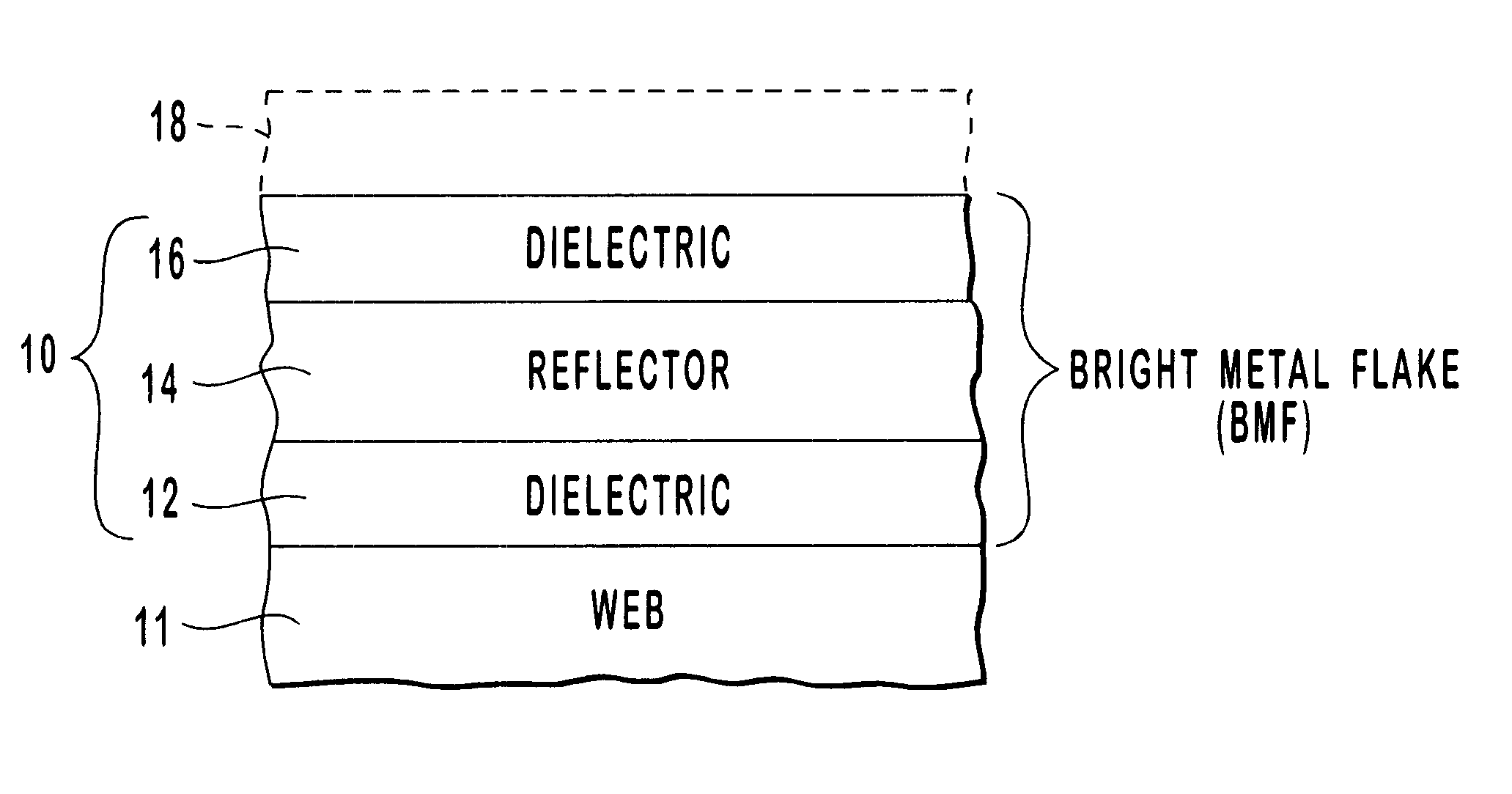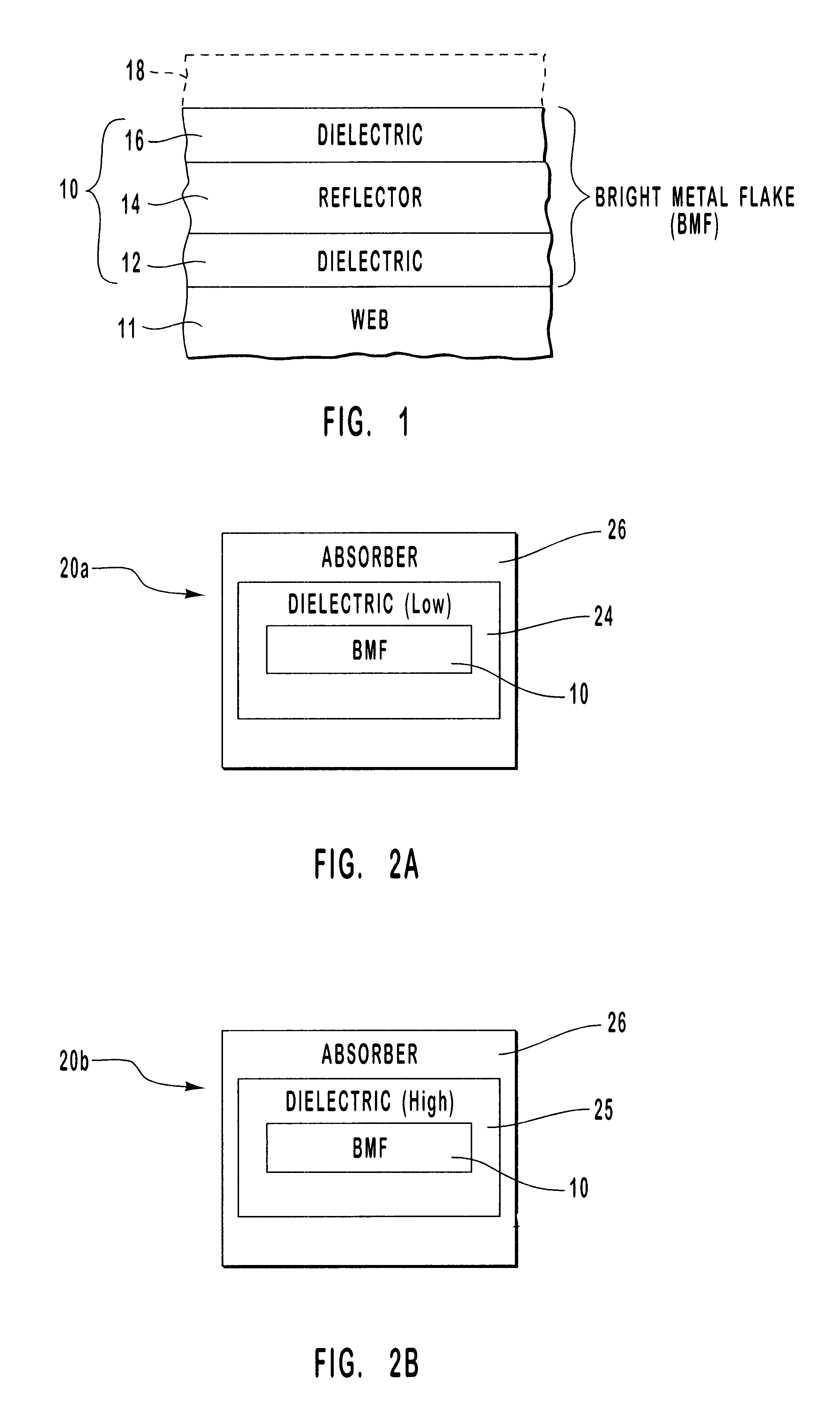Bright metal flake based pigments
a technology of metal flake and pigment, applied in the field of metal flake pigment, can solve the problems of affecting the optical performance of the pigment, affecting the application, and affecting the application, and achieve the effect of good specular reflectance characteristics
- Summary
- Abstract
- Description
- Claims
- Application Information
AI Technical Summary
Benefits of technology
Problems solved by technology
Method used
Image
Examples
example 2
Actual reflectance results obtained as a function of various wavelengths were observed and recorded for the flake-based pigments of Example 1 and for various other flake-based pigments. FIG. 8 is a reflectance-wavelength graph of the total reflectance with respect to wavelength, and shows a reflectance curve 82 for the flake-based pigments of Example 1. The reflectance curve 82 has also been empirically supported by the results obtained from various other measurement devices (not shown) such as ink drawdowns, paint sprayouts and microscopy.
Super-imposed with reflectance curve 82 on the graph of FIG. 8 is the theoretical reflectance curve for a pure aluminum flake 84 and the predicted reflectance curves of an aluminum flake coated with either magnesium fluoride 86 or silicon dioxide 88. The predicted curves are modeled upon the reflectance of aluminum as a function of various wavelengths for a single aluminum flake, plus a plurality of flakes. What should be appreciated is that altho...
PUM
| Property | Measurement | Unit |
|---|---|---|
| thickness | aaaaa | aaaaa |
| thickness | aaaaa | aaaaa |
| thickness | aaaaa | aaaaa |
Abstract
Description
Claims
Application Information
 Login to View More
Login to View More - R&D
- Intellectual Property
- Life Sciences
- Materials
- Tech Scout
- Unparalleled Data Quality
- Higher Quality Content
- 60% Fewer Hallucinations
Browse by: Latest US Patents, China's latest patents, Technical Efficacy Thesaurus, Application Domain, Technology Topic, Popular Technical Reports.
© 2025 PatSnap. All rights reserved.Legal|Privacy policy|Modern Slavery Act Transparency Statement|Sitemap|About US| Contact US: help@patsnap.com



